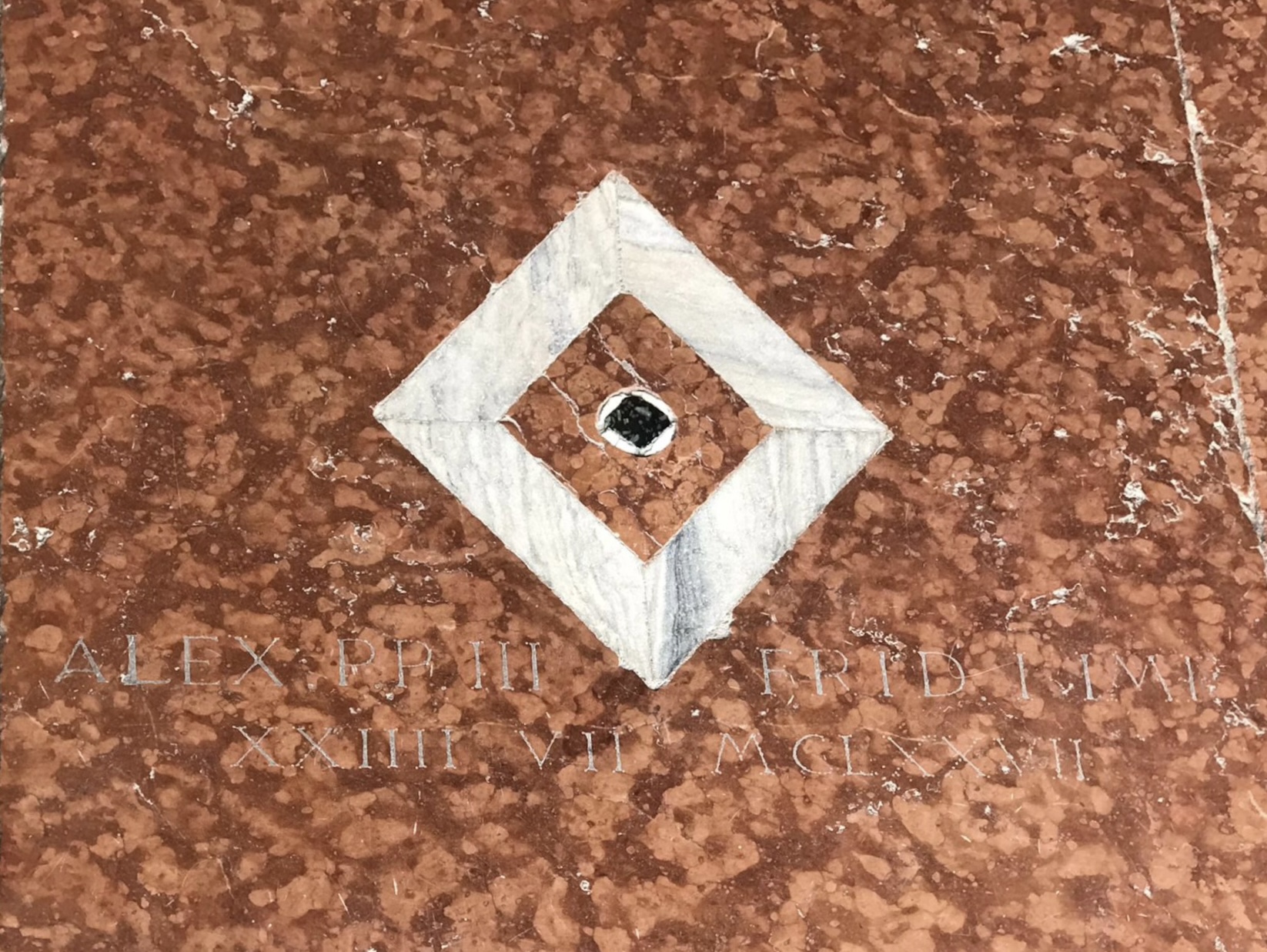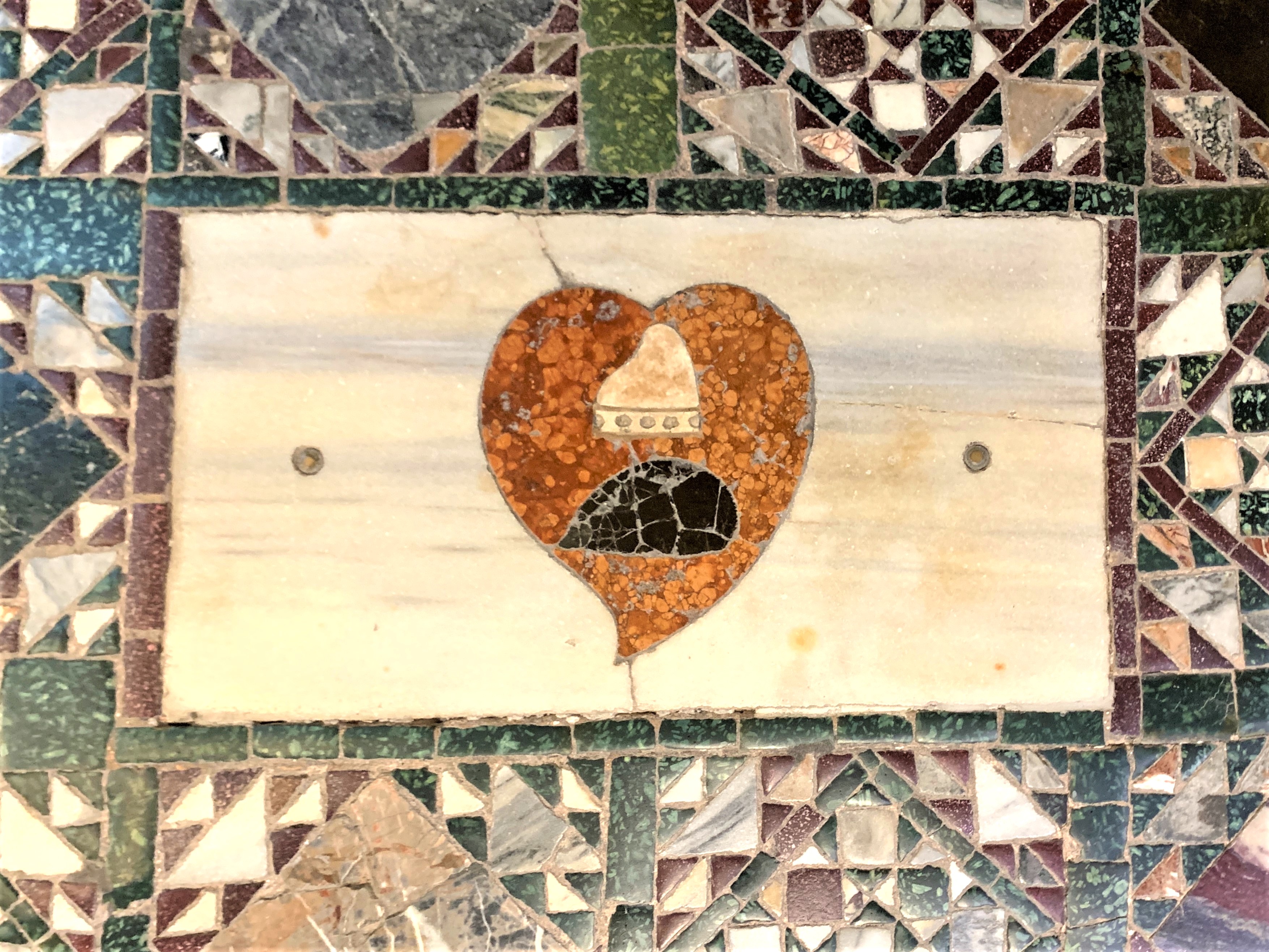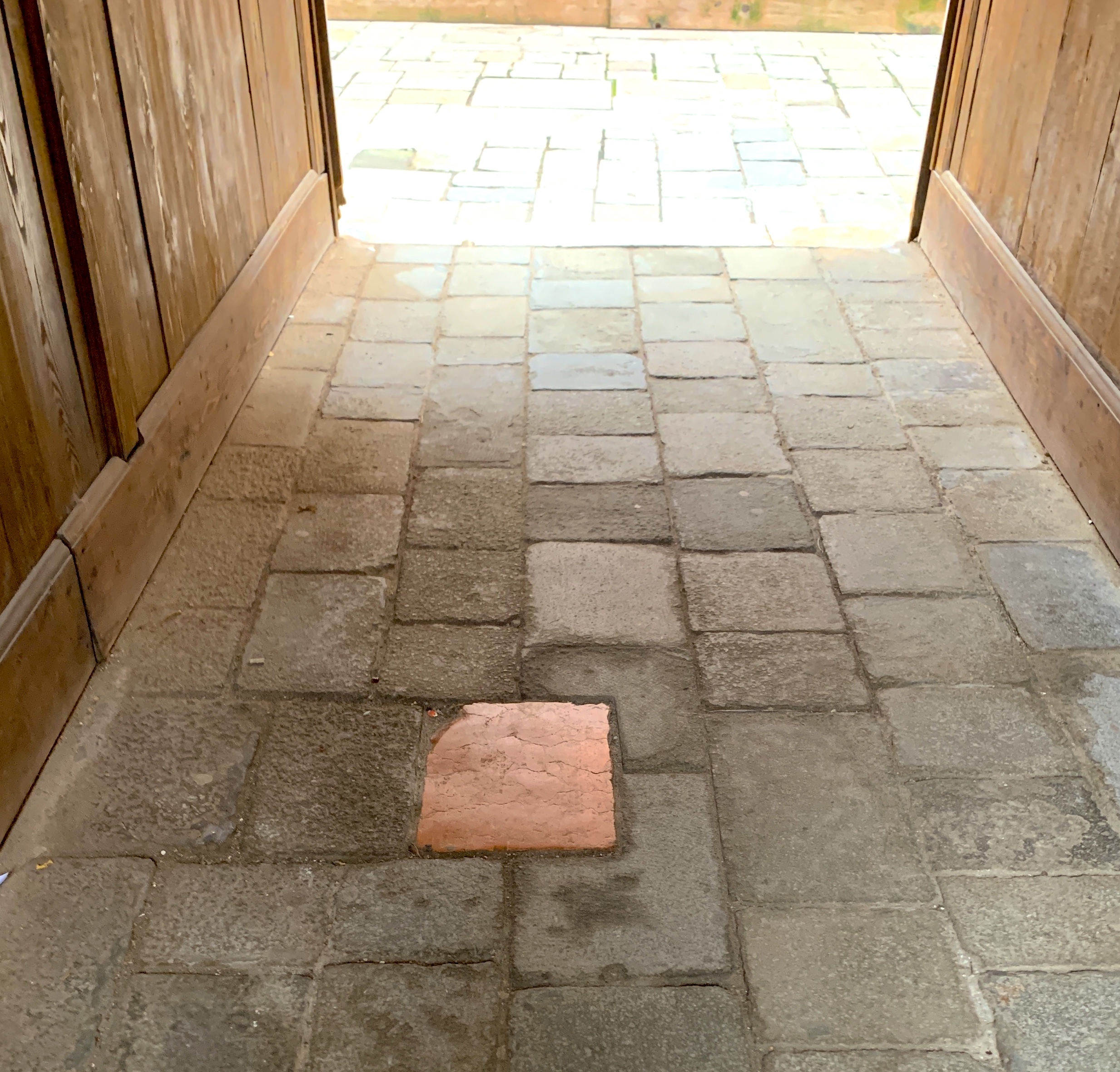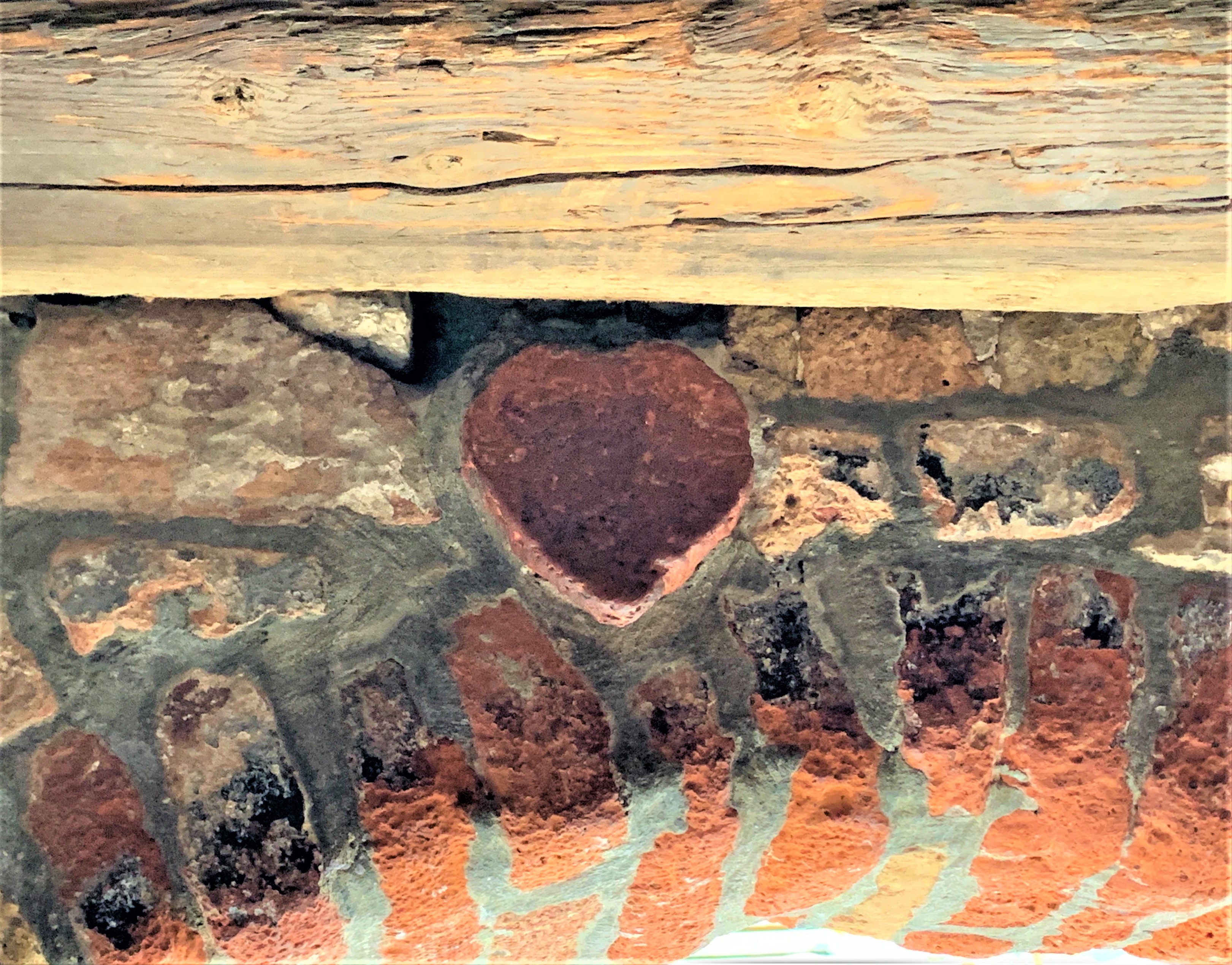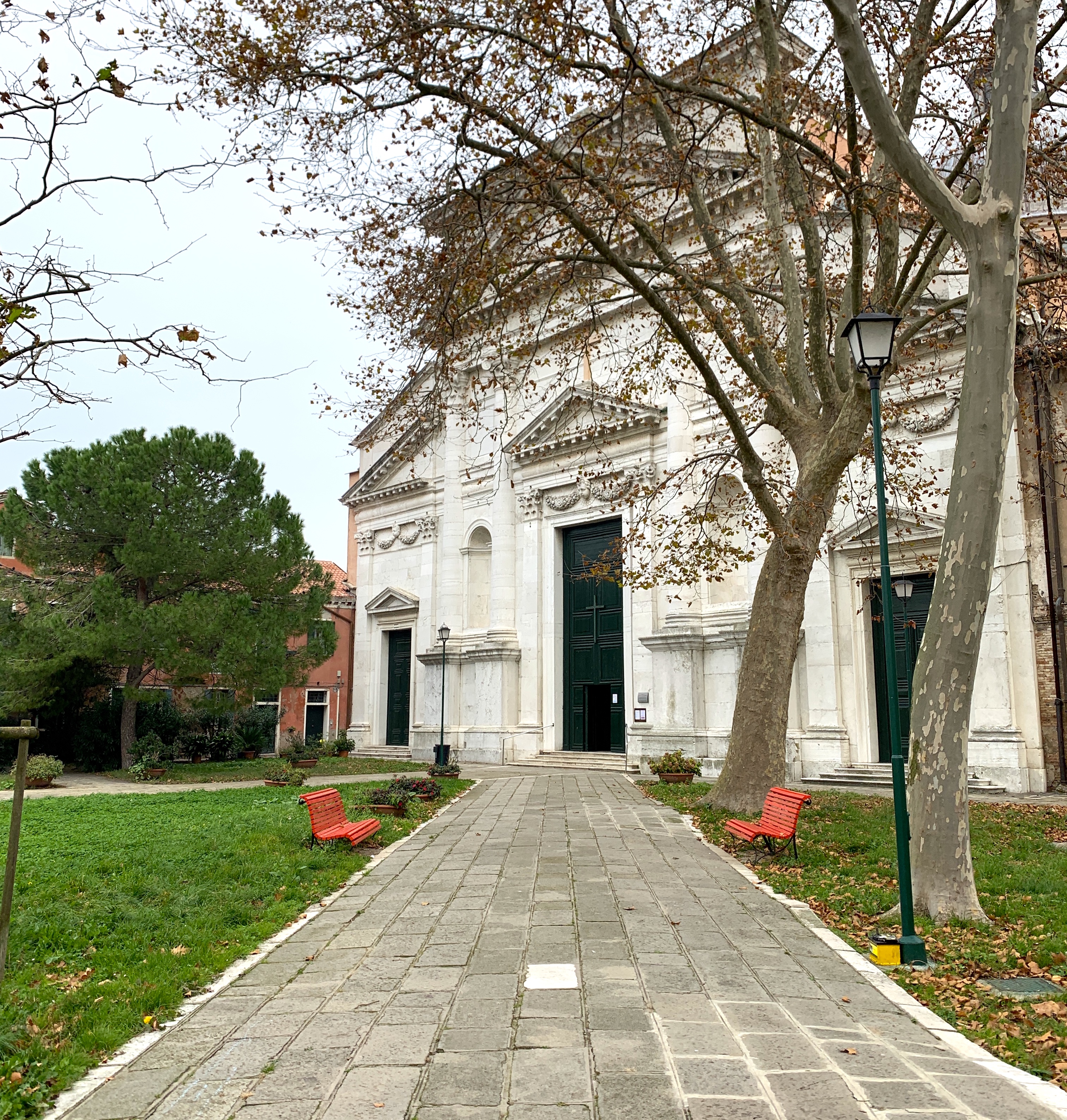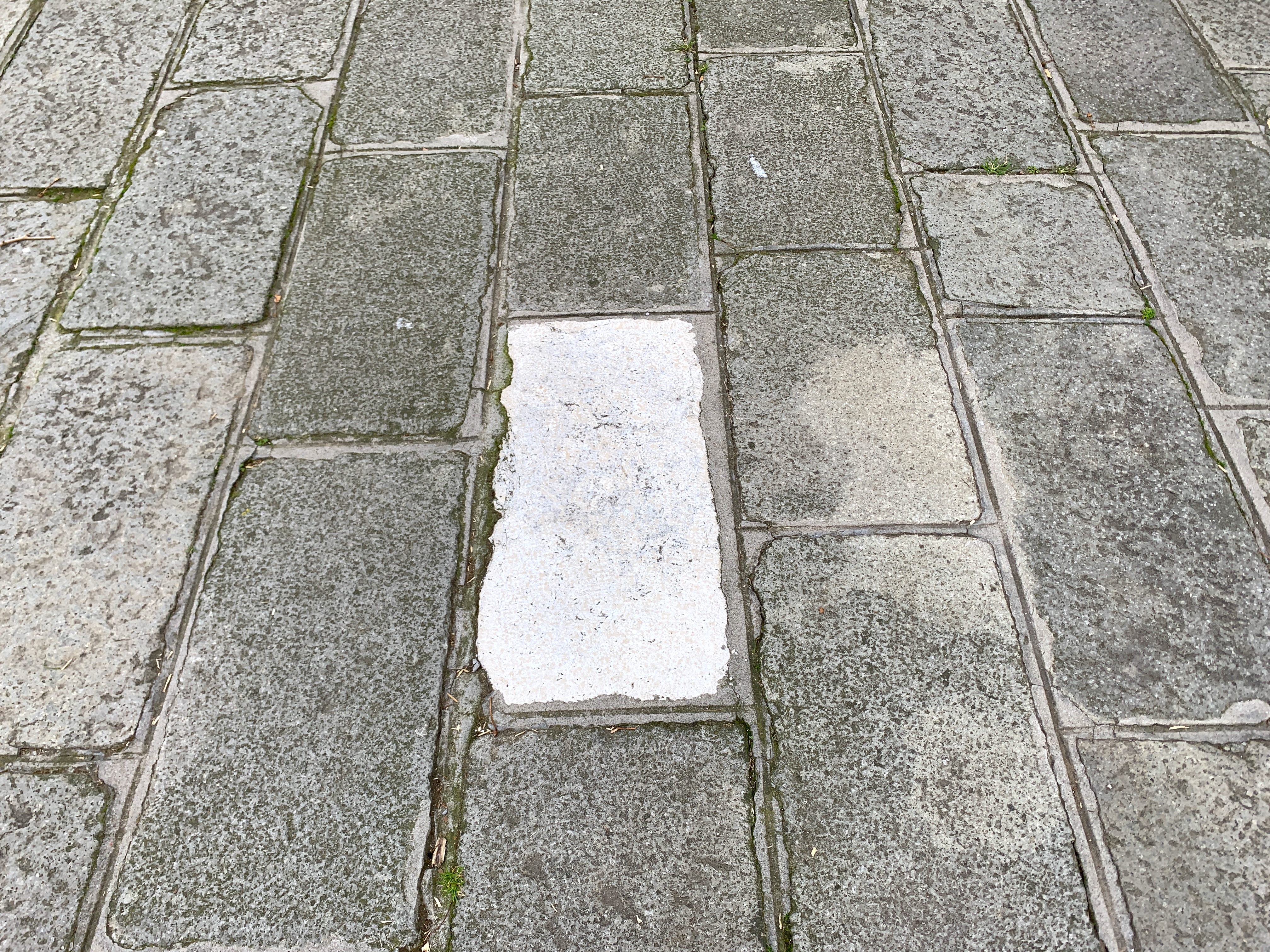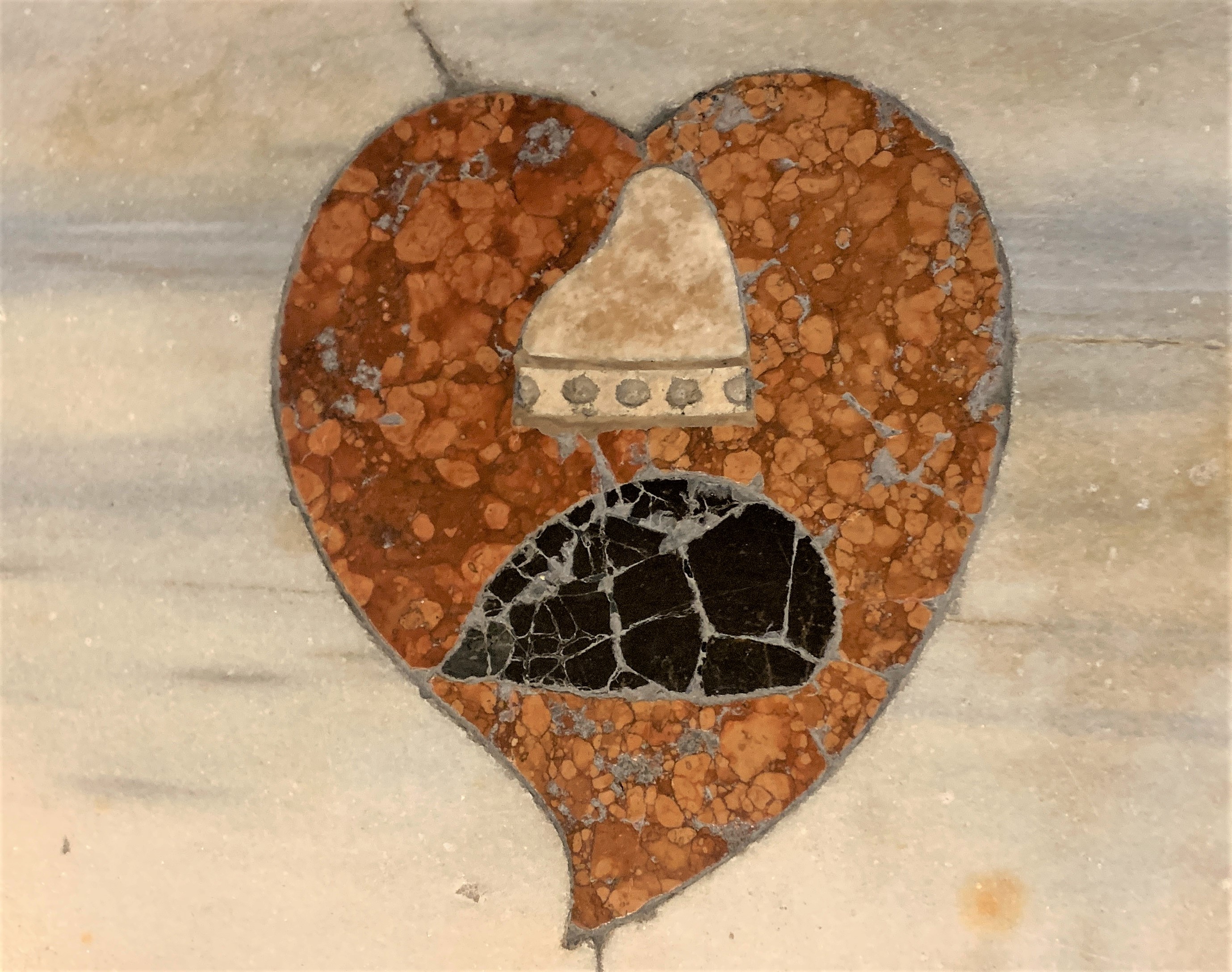Unusual itinerary...
With this post we would like to suggest a
new guided tour of Venice: we see it as a different way to learn about
the history, art and traditions of our city.
This idea struck us by chance, one fine day, as we were wandering in the hidden corners of Venice during the low season… What if it was the stones that could tell us something interesting about this enchanted city?
The Stone of “The Peace of Venice”
Let us start with
St. Mark’s Basilica, the golden church. On the floor of the narthex, right at the footsteps of the main entrance, we can notice a lozenge of white marble and red porphyry with an inscription below:
ALEX P.P.IIIFRID.I.I.P.
XXIIII VII MCLXXVII
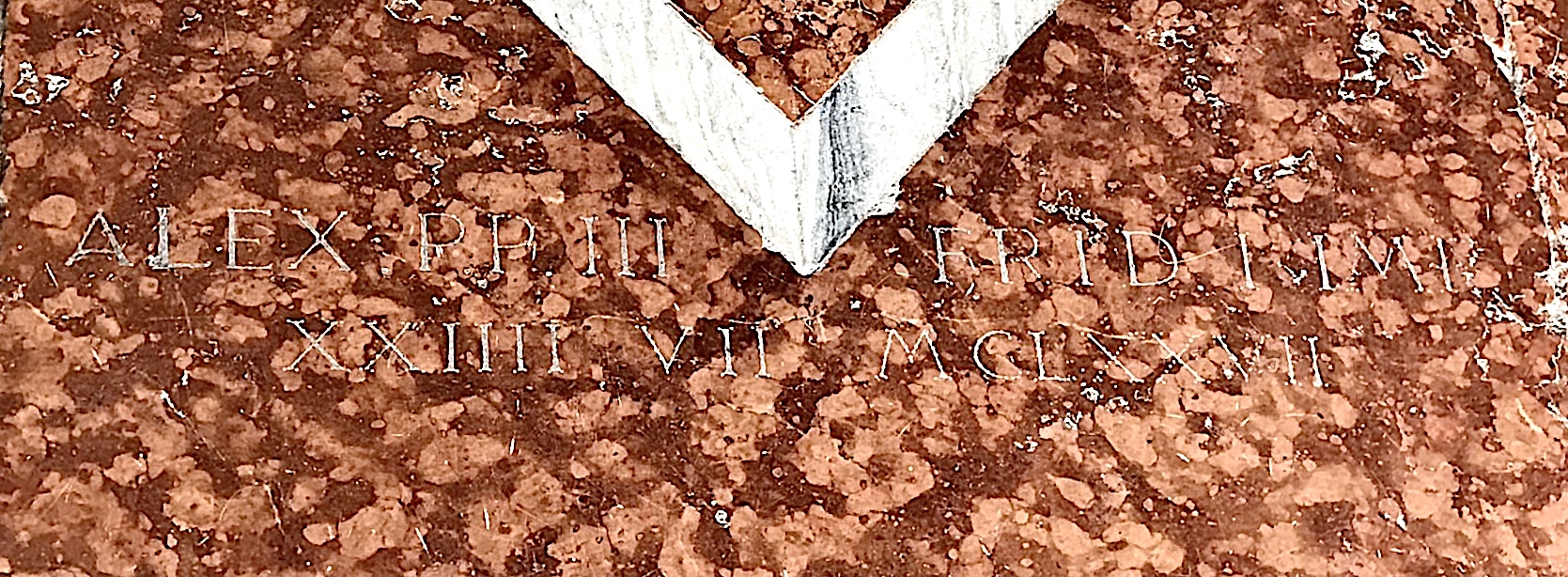
The inscription
This stone refers to the fact that on
July 24th, 1177, in this exact spot,
Emperor Frederick Barbarossa knelt down in front of Pope Alexander III: this moment marked the
end of the long war between the Papacy and the Empire and ended up with a peace treatise called
Peace of Venice. The peace broker of the event was Doge Sebastiano Ziani; consequently, Venice was recognised as
one of the major European States, arbiter of peace between the two most important political powers of that time.
Obviously, the Venetian attitude to diplomacy granted important
commercial advantages to the Republic.
The marble lozenge
The Stone of Doge Francesco Erizzo
Inside the
Basilica we can also spot another
unusual marble slab. After having admired the famous Golden Altarpiece (a real masterpiece by Byzantine goldsmiths), a few steps further we can see a
red heart made out of marble, with a white hat above and a
hedgehog underneath.
The red heart
Under this stone there rests
the heart of Doge Francesco Erizzo, who was in charge from 1631 to 1646. The hedgehog stands for the
coat of arms of his family, whereas the heart witnesses the fact that his wish was fulfilled: he had in fact written in his last will that he wanted his heart to be buried in a corner of the main altar inside St. Mark’s.
But where was his entire body then buried? We invite you to discover it with us…
The Stone That Stopped the Plague
Let us now leave St. Mark’s Square to dive into the
district of Castello. The first stone we would like to show you in this area has something to do with a
legend.
When the
terrible epidemic of plague hit the city in 1630-1631, the inhabitants of Corte Nova decided to follow the instructions that the Holy Mary had given to one of them in a dream. They had to paint an image of the Virgin herself, hang it on a wall of the passageway called Sotoportego Zorzi and pray in front of it for the end of the epidemic. And the
miracle took place indeed! The
plague stopped right in front of the holy image,
fell on the ground and dissolved on the exact spot where today we can see a red stone. All the inhabitants of that courtyard were then spared from the disease.
The red stone
A Stone Heart as a Symbol of Eternal Love
In a different Sotoportego, called Sotoportego dei Preti, we can notice a
red heart inserted in the brick on top of an arch. It reminds us of
another legend about the love
between a mermaid and a humble fisherman who lived in this place. Victim of a spell, the mermaid would be transformed into a
sea monster every Saturday. Only thanks to true love could the spell be broken. Orio, the young fisherman, married beautiful Melusina the mermaid, and the spell was eventually broken. Some years afterwards, though, Melusina fell sick and died. Orio, wracked with pain, sculpted the red heart, that became
the symbol of his eternal love for his mermaid.
Orio and Melusina’s red heart
The White Stone of San Pietro di Castello
And we finally reach a place that very few guests visit, this being the
extreme end of the Castello district. Here, on the ground, we see a white stone, which definitely stands out among the grey stones of the pavement, right in front of the
Basilica of San Pietro di Castello, formerly the cathedral of Venice up to
1807.
The Church of San Pietro di Castello from the alley
In this area there used to be the
residence of the Patriarch of Venice, the highest religious representative in town.
Every year, on
June 29th, i.e. on St. Peter’s day, the Venetian Doge, the political representative, used to reach Castello by boat, to celebrate the feast with the Patriarch.
But where would the two of them exactly meet? The Patriarch could not have stood the humiliation of receiving the Doge at the dock and, at the same time, the Doge did not want to show that he was inferior to the Patriarch by walking up to the entrance of the cathedral.
To overcome the embarrassment, it was decided
to place a white stone in the middle of the alley that leads to the church: that would be
the place where the two would meet, and this would stress the fact that
they were equally important.
The white stone
This will be the end of our
unusual itinerary, but during our guided tour of Venice in this area
we will tell you much more: we will show you unsettling bas-reliefs and quite original names of some alleys, we will meet huge sculptures in the
always surprising Venetian maze…We are waiting for you! Ciao!
To book your tour:
info@guidedtoursinvenice.com You could also be interested in the following guided tours and blog posts:St'Mark's square: the Venetian heartbeat. (section:
Classical tours)
Walking at the discovery of Castello. (section:
Unusual tours)
Venice and the plague. (section:
Specific tours)
Venice between sacred and profane:the feast of Madonna della Salute. (section:
Blog)
A tailored private tour in Venice: the lions'mouths. (section:
Blog)
Curious sculptures in Venice. (section:
Blog)
Venice for kids: the legend of Melusina. (section:
Blog)
Venice and the red stone that stopped the plague. (section:
Blog)
Our guided and private tours of Venice. (section:
Blog)
A special guided tour: love in Venice in all its different aspects. (section:
Blog)

